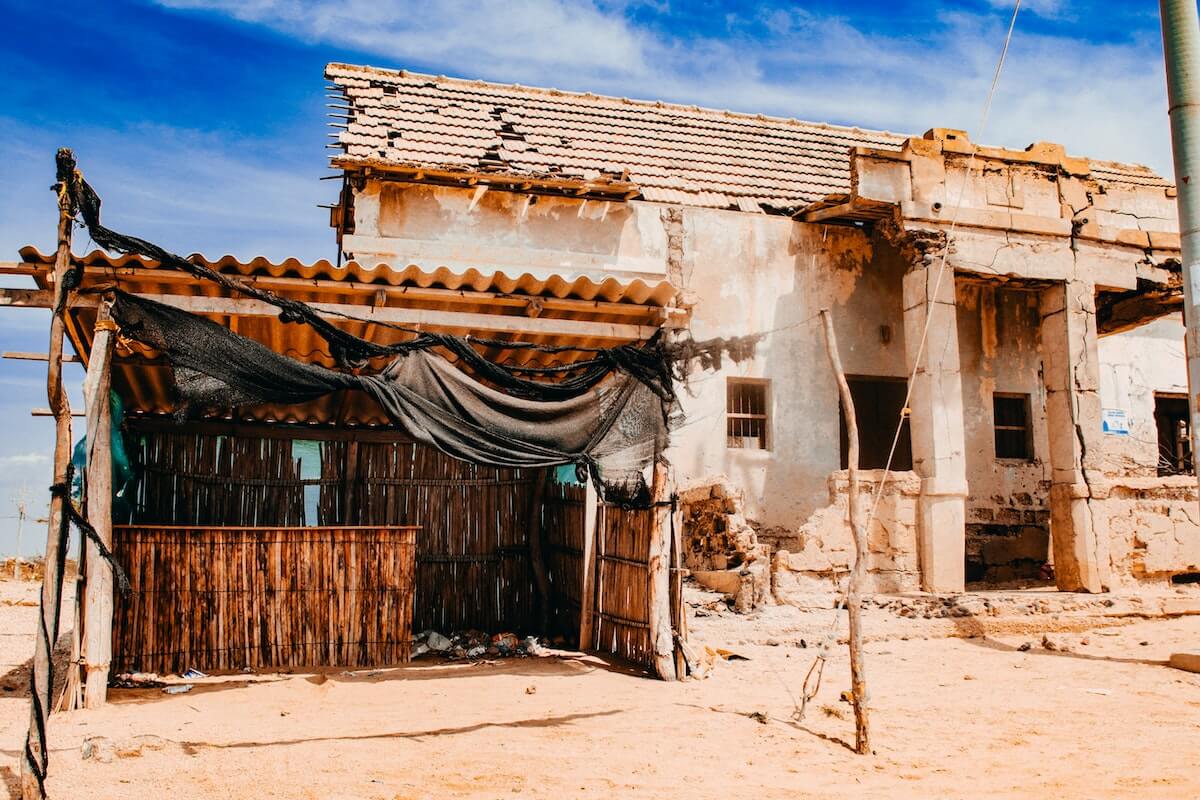When they have enough bite, horror movies and westerns can leave a mark on you well after watching.
Bone Tomahawk, a combination of the two genres, is dusty enough to dehydrate and violent enough to scar.
But fans say it’s an oh-so-good kind of trauma.
Yet, like a western’s hero, this movie was up against the odds.
It was the directorial debut for S. Craig Zahler – no easy task.
Experts told Zahler he’d need a $10 million budget and 60 shooting days to make the movie, but he had $~1.8 million and 21 days.
But Zahler was an experienced screenwriter and cinematographer (who also helped score the film), backed by an impressive cast who believed in his creative prowess.
And he had an underdog/cult movie’s good luck charm, Kurt Russell, in the lead.
So is Bone Tomahawk a compelling, gritty western with a stiff shot of horror or a middling mess landing off the mark?
The Plot of Bone Tomahawk:
A forsaken tribe of cannibal cave dwelling Native Americans abducts three people from micro town Bright Hope, including Samantha O’Dwyer (Lili Simmons).
Sheriff Franklin Hunt (Kurt Russell) organizes a rescue party. Deputy Chicory (Richard Jenkins) and Gunslinger John Brooder (Matthew Fox) volunteer.
And Samantha’s husband, Arthur O’Dwyer (Patrick Wilson), insists on coming with them, despite his broken leg.
Will the rescuers defeat the cannibals?
The Rest of the Main Cast Includes:
- Kathryn Morris as Lorna Hunt
- Evan Jonigkeit as Deputy Nick
- David Arquette as Purvis
- Kathryn Morris as Lorna Hunt
- Sean Young as Mrs. Porter
- Sid Haig as Buddy
- Fred Melamed as Clarence
- Maestro Harrell as Gizzard
- Jeremy Tardy as Buford
- Jamison Newlander as The Mayor
- James Tolkan as Pianist
- Michael Paré as Mr. Wallington
- Zahn McClarnon as The Professor
- Michael Emery as Redheaded Fellow
- Raw Leiba as Wolf Skull
- Geno Segers as Boar Tusks
- Jay Tavare as Sharp Teeth
- Eddie Spears as Serrated Tomahawk
- Alex Meraz as Eagle Skulls
The Good Things:
Slow-Burning Realism, +5 Points
Zahler doesn’t stir fry this film; it’s an all-day stew.
But it’s a stylistic choice that works despite a 132-minute runtime.
The slower, realistic dwelling time natural to Zahler transports you to the pace of life in the 1890s.
And the jarring contrast between this film’s plodding and the blink-and-you-miss-them moments of violence helps them hit harder.
Lighting and Cinematography, + 5 Points
The lighting goes western all right, and it’s lovely. Lamplight paints interiors of homes and watering hole The Learned Goat in near sepia.
But the camerawork takes a novel angle.
There are the sweeping shots of men on horseback you’d expect in a western, but there is a distinct lack of close-ups, a genre staple.
Zahler has said he prefers to keep the camera back, allowing more space for acting techniques, like body language.
It’s a nifty aesthetic, as we more often take in the whole moment of tension.
Our Four Rescuers, + 10 Points
The second act (where many promising films go to die) is the posse’s multi-day journey to reach the valley of the cannibal Troglodytes.
With the villains missing, the movie could fall into a sand trap here and never climb out.
However, the clever writing mixes dynamic personalities to hold the audience’s interest and keep tension.
Russell’s Sheriff Hunt steps away from the campy courage of his Wyatt Earp (Tombstone) for a whip-smart, strategic, no-ego Sheriff. He’s out to protect, not make a name for himself.
John Brooder, the supposed white-coated gentleman, has a twisted sense of honor and the finest gear. Full of himself, he challenges Hunt’s leadership.
Arthur O’Dwyer, the brave and determined husband, is a liability. Be it his injured leg or out-of-control emotions, he’s constantly setting the group back.
The bumbling Deputy Chicory never shuts up. He gives Hunt support and offers comic relief.
Altogether, the dynamics of the posse keep the movie’s flame from blowing out. And it would be criminal not to mention the strong performances here.
Fun fact: Russell started filming The Hateful Eight the Monday after this film wrapped, which is why he looks similar in both movies.
Sound Design, + 5 Points
The sound design made my wife gasp from the other room.
Sand crunches satisfyingly underfoot, grass bristles, and the whistles and roars of the Troglodytes mimic blood-thirsty wolves from beyond.
And in the violent moments, bones crunch, and flesh rips apart in awful stereo.
Troglodytes, + 5 Points
Yeesh. Talk about a black sheep in your family. You can see why these in-bred Troglodytes, shunned by other Native Americans, wouldn’t make the guest list at tribal family reunions.
Like many monster movies, the film keeps the cannibals mostly obscured for the first and second acts.
But when we meet them up close, they’re pasty, nightmare-inducing human hulks. They look like they train for murder at all hours and spend their free moments body piercing with animal bones.
And while some horror movies feel the need to explain how a monster came to be, this film only reveals a little about their culture, even when we’ve gone into their lair.
It’s an intelligent creative choice, as the deliberate lack of concrete details makes them more unsettling.
Though their howls sound slightly supernatural, they feel an authentic horror from an 1890s West.
Lightning Realistic Violence, + 5 Points
This film’s plain depiction of savage violence is more affecting than movies that purposely spill blood everywhere.
It comes in flashes and isn’t glorified. Limbs are chopped away. Bullets knock attackers down. Rocks bash skulls.
But it serves a purpose. The awful realism makes you more invested in the characters’ survival.
Though I must warn you: One death scene is arguably the most disturbing I’ve watched in a movie (and I’ve seen films where blood and guts fall like rain, such as Ichi the Killer).
Purvis and Buddy, + 2 Points
David Arquette and Sid Haig open the film as the cold-blooded criminal duo of Purvis and Buddy, and in their bit parts, the horror icons shine.
They inject dark comedy into the film with their mentor/mentee back-and-forth arguing as they murder a small camp of men.
The Not-As-Good Things:
Unclosed Character Arc? -3 Points
**Heavy Spoiler Alerts Here**
Brooder is layered and ambiguous, wavering between hero and antagonist. His arrogance and clouded morals are an excellent contrast to the earnest nobility of Hunt, Chicory, and Arthur O’Dwyer.
He’s willing to risk his life in the rescue, but no doubt he’s motivated to revenge-kill more Native Americans (who killed his family members).
As built, he’s armed with dramatic potential for the final conflict.
He could be fodder for a great humbling, an overconfident Custer against the cannibals. He could provide a moment of gunslinger invention to turn the tide of battle or justify betraying them all to save himself.
Instead, he dies unceremoniously at the beginning of the raid on the Troglodytes.
It’s shocking. Brooder was my bet to gun down several enemies. And maybe he dies to make the cannibals even scarier (my God, they got Brooder!).
But while Hunt and Chicory assure him they will give his death meaning, Brooder’s end feels incomplete.
We also know philandering Brooder tried to engage Mrs. O’Dwyer in an affair but that his advances failed.
You wonder if it’s a missed opportunity. Had something more happened in that incident, it could have made his sacrifice for her and Arthur’s sake more (or even less) noble. Perhaps he could have a sin to right in self-sacrifice or something else.
Nothing and nobody is safe in a Zahler film. And I guess that’s the point, but I longed for more out of this character.
Dialogue Not Quite Seamless, -1 Point
My sensitivity is in the upper range here, and the character’s lines are mostly excellent. But there are a few nitpicks with dialogue in the first ~20 minutes.
In the opening, the conversation between Purvis and Buddy is darkly hilarious and characterizes them.
But as the gruesome twosome (like they’d say in It’s Always Sunny in Philadelphia) draw closer to the Troglodytes’ burial ground, the pattern of Purvis stating a fear that Buddy puts off or redirects starts to get wooden.
It’s as if Purvis’s dumb or fearful suggestions and Buddy’s retorts are how they speak all day long, which is unnaturally repetitive.
Then there’s an expositional dialogue between the O’Dwyers where the script rails show.
Theirl conversation covers how Arthur injured his leg, how long it will take to heal, and his line of work.
But it’s unnatural. The couple is sharing details they would be aware of.
Still, writers do have to find a way to work in exposition. So this is a minor deduction.
Go Watch Bone Tomahawk
Total Arbitrary Points Score: 33 Points
With its unique blend of western and a big lump of horror, I recommend Bone Tomahawk for fans of either genre.
Forget about heroic rides into the sunset or quick-draw shootouts as the clock strikes noon.
This is a story of resilience against the dangers of frontier life.
Its horrors are graphic and realistic – knives cut flesh. Insects buzz over the dead. Man hunts and eats man.
And it’s a long tale that unfolds masterfully, deserving your full attention.
This picture is a real achievement for S. Craig Zahler, its cast, and crew. And it’s further proof that creative control and talent can overcome budget and shooting time limitations.
But squeamish audiences, beware: you’ll need to stay away.
Enjoyed this Post?
Thank you so much. If you’d like to get a ping when I have a new article, you can join my newsletter below.
Disclaimer:
The factual information about the film in this review was gathered through online sources, such as Wikipedia, IMDB, or interviews. Misrepresentations and errors are possible but unintentional.




